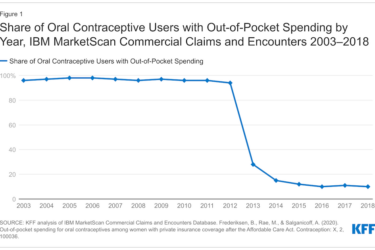
Back when states were deciding whether to run their own exchanges or let the feds do it, they also had to make a lot of decisions about how their exchanges would operate.
One question was whether to have a “clearinghouse” and let any health plan that met the legal requirements participate in the marketplace. The other option was to be an “active purchaser,” and to have the state exchange directly negotiate with the health plans over premiums, provider networks etc.
The rationale, for each model:
- Proponents of the clearinghouse approach said maximizing competition would restrain premiums.
- Proponents of active purchasing said a little extra government oomph in shaping the marketplace would achieve that.
Generally speaking – very generally – more liberal health policy experts backed the active purchaser model. Also it’s worth noting that an early 2011 Georgetown study of the two exchanges that predated the ACA, Utah’s small business clearinghouse exchange and the Massachusetts Connector active purchaser, suggested that it might not make much difference.
Now a small study published recently in Health Affairs (AHJC members have free access.) suggests that state-run exchanges using the clearinghouse had ”significantly lower adjusted average premiums for all plans within each metal tier (bronze, silver, and gold)” than the 10 state exchanges using active purchasers. It’s a preliminary study, it looks at premiums, not total out-of-pocket expenses, and it used health coverage for a 29-year-old as its comparison point, so maybe a study looking at older people would find something different.
But the research, via the University of Minnesota, still made some interesting points that you can keep in mind as you keep reporting on your state exchanges and the ongoing disputes about costs and narrow networks.
The authors wrote:
“Some analysts and stakeholders have argued that state-based Marketplaces using active purchasing models could be better equipped than others to keep premiums in check. Active purchasers, by definition, are more engaged than those in clearinghouses are in selecting and contracting with health insurers and negotiating premiums using price and quality metrics. In addition, active purchasers may be more involved than clearinghouses are in monitoring premiums and health plan market shares. Others contend that greater engagement in Marketplace plan management will result in an increase in premiums because of increased administrative costs associated with complying with additional plan participation requirements, quality reporting, and meeting other certification criteria. Moreover, as many stakeholders and brokers had suggested prior to Marketplace implementation, a clearinghouse model may allow a larger pool of insurers to enter the market, creating more competition across plans.”
The state-based clearinghouses also had lower premiums than the state-federal partnerships or the federal exchange states, which were all clearinghouses.
The study also found that competition mattered. In markets where a lot of insurers were offering coverage, premiums tended to be lower. Urban areas tended to have higher premiums as did areas with higher physician fees, and areas “with limited hospital competition.” (See this tip sheet on hospital consolidation.) Places with high costs before the ACA were still higher cost areas, and the same is true for lower cost areas.
(Just as I was writing this post, another study by RAND landed in my email looking at deductibles, not premiums. The study above was posted online in December. Both it, and this new RAND one, are in the January edition of the journal. The RAND study suggested that for people getting subsidized coverage, marketplaces with high competition tended to have higher deductibles than those in regions that offered fewer health plan choices. )
These early patterns may mean exchange officials in your state have to think about their policies, their assumptions, and their role in the market. The 2015 coverage year is just getting started, but in just a few months the states will begin planning for 2016. It’s never too early to start asking questions.








